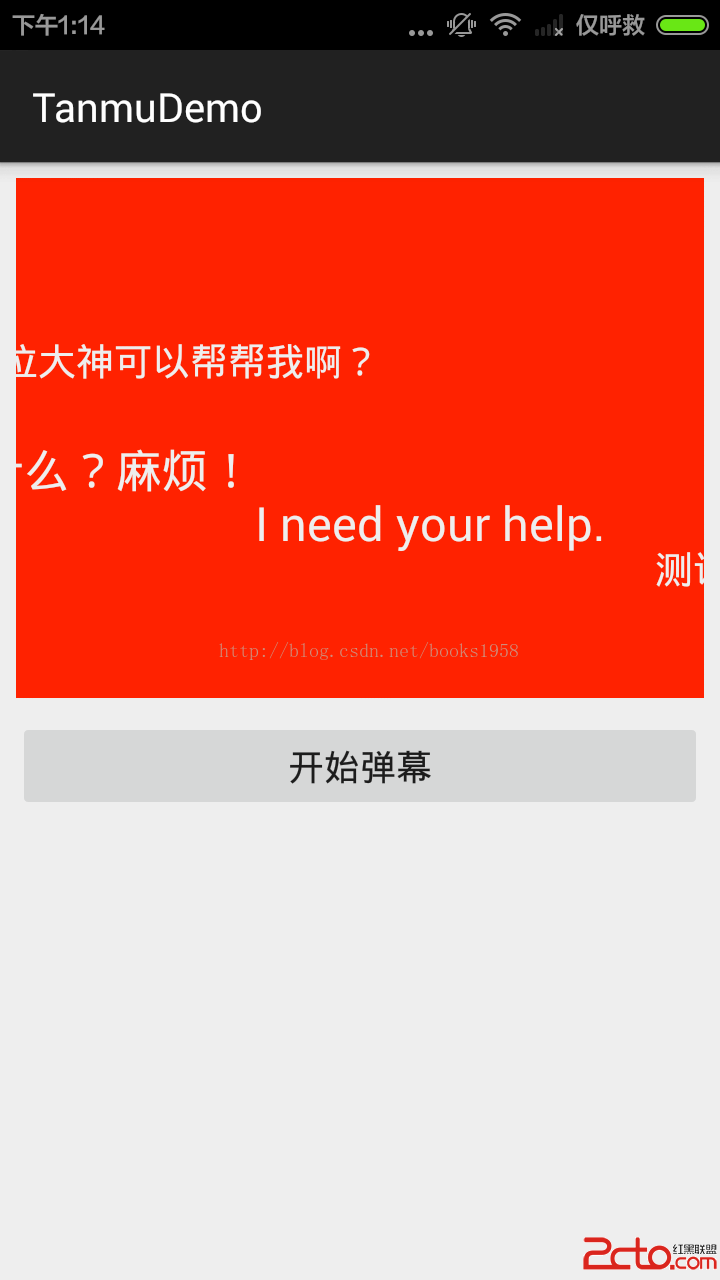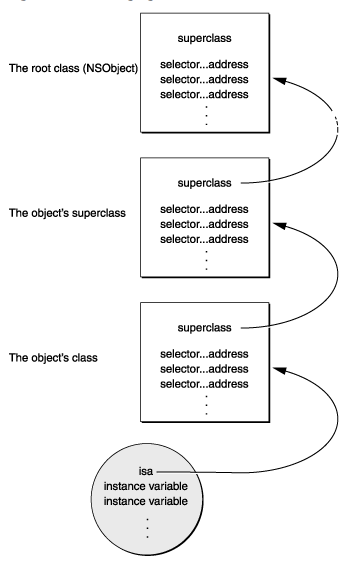編輯:關於Android編程
1. 創建和啟動線程的兩種傳統方式
概念:java 實現一條線索
有兩種方法:
1、繼承thread 類
例子:
// 繼承Thread類
new Thread(){
publicvoid run(){
while(true){
try {
Thread.sleep(2000);
}catch (InterruptedException e) {
e.printStackTrace();
}
System.out.println(Thread.currentThread().getName());
}
}
}.start();
2、實現runnable接口
例子:
//實現Runnable接口
new Thread(new Runnable(){
publicvoid run(){
while(true){
try {
Thread.sleep(2000);
}catch (InterruptedException e) {
e.printStackTrace();
}
System.out.println(Thread.currentThread().getName());
}
}
}).start();
2.傳統的定時器實現方式
代碼
importjava.util.concurrent.Executors;
importjava.util.concurrent.ScheduledExecutorService;
import java.util.concurrent.TimeUnit;
publicclass TimerTest {
/**
* 定時器
*/
publicstaticvoid main(String[] args) {
ScheduledExecutorServiceservice = Executors.newScheduledThreadPool(3);
service.scheduleAtFixedRate(
new Runnable(){
publicvoid run() {
System.out.println(Thread.currentThread().getName());
}
},
10,
1,
TimeUnit.SECONDS);
while(true){
try {
Thread.sleep(2000);
} catch (InterruptedException e) {
e.printStackTrace();
}
System.out.println(Thread.currentThread().getName());
}
}
}
3.傳統的線程同步互斥
線程的同步和互斥
Synchronized
線程創建過程:同步:子線程循環10次,接著主線程循環100次,接著的又回到子線程循環10次,接著又回到主線程循環10次。如此,循環50次。
packageorg.nagi.Thread;
publicclass TeaTSynchronized {
static Businessbusiness =new Business();
publicstaticvoid main(String[] args)throws InterruptedException {
//子線程
TeaTSynchronized.init();
//主線程
for(int i=0;i<50;i++){
business.main();
}
}
//子線程
publicstaticvoid init(){
new Thread(new Runnable() {
@Override
publicvoid run() {
for(int i=0;i<50;i++){
try {
business.sub();
}catch (InterruptedException e) {
e.printStackTrace();
}
}
}
}).start();
}
}
class Business{
booleanshouldSub =true;
//子線程方法
publicsynchronizedvoid sub()throws InterruptedException{
//使用我當前線程的,等待
while(!shouldSub){//這裡使用while而不用iF防止假喚醒!詳細信息可參考JavaApi
this.wait();
}
for(int i=0;i<10;i++){
System.out.println(Thread.currentThread().getName()+"count" + i);
}
shouldSub = false;
this.notify();
}
//主線程的操作方法
publicsynchronizedvoid main()throws InterruptedException{
while(shouldSub){//這裡使用while而不用iF防止假喚醒!詳細信息可參考JavaApi
//使用我當前線程的,等待
this.wait();
}
for(int i=0;i<100;i++){
System.out.println(Thread.currentThread().getName()+"count" + i);
}
shouldSub = true;
this.notify();
}
}
4.傳統的線程間通訊
ThreadLoacal 線程間的通信:就是線程內的數據共享,兩個或多個代碼塊共享的一個數據, 在代碼塊之間數據是獨立,在代碼塊之內是數據共享的。
5.ThreadLocal與線程級變量共享
ThreadLoacal就相當Map; 一個線程TheadLoacal 只能放一個數據;
6.多線程訪問共享數據的經典總結
1、可以把需要共享的數據轉給runnable 接口;
2、將共享數據的封裝為一個對象, 在多個線程裡面runnable 接口run方法
3、可以使用ThreadLocal類
如果想要操作一個原子性的數據類型可以用原子方式更新的 int 值。
在操作某一個數據原子性操作的時候,可以使用AtomicInteger AtomicIntegerArray
定義一個線程池:
packageorg.nagi.Thread;
importjava.util.concurrent.ExecutorService;
importjava.util.concurrent.Executors;
/**
*線程池
*@author dell
*
*/
publicclass ThreadPool {
publicstaticvoid main(String[] args) {
/*緩存線程池*/
//ExecutorService threadcached=Executors.newCachedThreadPool();
/*單個線程池,當線程死了,自動會有線程啟動*/
//ExecutorService threadSingle = Executors.newSingleThreadScheduledExecutor();
//線程池
ExecutorService threadPool = Executors.newFixedThreadPool(4);
threadPool.execute(new Runnable() {
@Override
publicvoid run() {
for(int i=0;i<5;i++){
System.out.println(Thread.currentThread().getName()+"任務:"+ i);
}
}
});
//當任務執行完成之後就可以關閉掉
threadPool.shutdown();
}
}
8.Java5中的定時器
方法參考
ScheduledFuture
schedule(Callable callable, long delay, TimeUnit unit)
創建並執行在給定延遲後啟用的 ScheduledFuture。
ScheduledFuture
Executors.newScheduledThreadPool(4).scheduleAtFixedRate(
new Runnable() {
@Override
publicvoid run() {
System.out.println("Bombing");
}
},
4,//多少秒之後執行run方法
2,//間隔多少時間執行
TimeUnit.SECONDS);//時間單位
Callable和Futrue使用:
/*使用Callable調用回返一個數據,使用futrue去取並且可以指定時間*/
ExecutorService threadSingle = Executors.newSingleThreadExecutor();
Future futrue =threadSingle.submit(newCallable() {
@Override
public String call()throws Exception {
Thread.sleep(1000);
return"hello world";
}
});
try {
//futrue取出數據
System.out.println("result:" + futrue.get(3,TimeUnit.SECONDS));
} catch (Exceptione) {
e.printStackTrace();
}
9.java5提供的可返回結果的線程模式
10.java5中的鎖與讀寫鎖
Lock:java 中鎖Lock 比Synchronized更加的面對對象,與生活中的對象一樣,鎖業是一個對象。
例子代碼:
importjava.util.concurrent.ExecutorService;
importjava.util.concurrent.Executors;
importjava.util.concurrent.locks.Lock;
importjava.util.concurrent.locks.ReentrantLock;
publicclass LockTest {
/**
* @param args
*/
publicstaticvoid main(String[] args) {
final Business business =new Business();
ExecutorService service = Executors.newFixedThreadPool(3);
for(int i=0;i<3;i++){
service.execute(new Runnable(){
publicvoid run(){
business.service();
}
});
}
service.shutdown();
}
}
class Business{
privateintcount = 0;
Lock lock = new ReentrantLock();
publicvoid service(){
lock.lock();
count++;
try {
Thread.sleep(10);
System.out.println(count);
} catch (InterruptedException e) {
e.printStackTrace();
}finally{
lock.unlock();
}
}
}
Lock : 還可以實現一個讀寫鎖,
/**
* 讀的的時候不互斥
* 寫的時候互斥
* @param key
* @return
*/
public Object getEntityFromCache(Stringkey){
Object object = cache.get(key);
if(object ==null){
lock.readLock().lock();//鎖得read操作
try{
object ="btbu";//去數據庫查找
cache.put(key, object);
}finally{
lock.readLock().unlock();
}
}
return object;
}
11.LockCondition同步工具
Condition 將 Object 監視器方法(wait、notify和notifyAll)分解成截然不同的對象,以便通過將這些對象與任意Lock 實現組合使用,為每個對象提供多個等待 set(wait-set)。其中,Lock 替代了 synchronized 方法和語句的使用,Condition 替代了 Object 監視器方法的使用。
例子:
packageorg.nagi.Thread;
import java.util.concurrent.locks.Condition;
importjava.util.concurrent.locks.ReentrantLock;
publicclass TestCondition {
static Businessbusiness =new Business();
publicstaticvoid main(String[] args)throws InterruptedException {
//子線程
TestCondition.init();
//主線程
for(int i=0;i<50;i++){
business.main();
}
}
//子線程
publicstaticvoid init(){
new Thread(new Runnable() {
@Override
publicvoid run() {
for(int i=0;i<50;i++){
try {
business.sub();
}catch (InterruptedException e) {
e.printStackTrace();
}
}
}
}).start();
}
}
class Business{
booleanshouldSub =true;
ReentrantLock lock = new ReentrantLock();
Condition condition =lock.newCondition();
//子線程方法
public void sub()throws InterruptedException{
lock.lock();
try{
//使用我當前線程的,等待
while(!shouldSub){//這裡使用while而不用iF防止假喚醒!詳細信息可參考JavaApi
condition.await();
}
for(int i=0;i<10;i++){
System.out.println(Thread.currentThread().getName()+"count" + i);
}
shouldSub =false;
}finally{
condition.signal();
}
}
//主線程的操作方法
publicsynchronizedvoid main()throws InterruptedException{
lock.lock();
try{
while(shouldSub){//這裡使用while而不用iF防止假喚醒!詳細信息可參考JavaApi
//使用我當前線程的,等待
condition.await();
}
for(int i=0;i<100;i++){
System.out.println(Thread.currentThread().getName()+"count" + i);
}
shouldSub = true;
this.notify();
}finally{
condition.signal();
}
}
}
緩沖隊列的實現
import java.util.concurrent.locks.Condition;
importjava.util.concurrent.locks.Lock;
importjava.util.concurrent.locks.ReentrantLock;
/**
*緩沖隊列
*@author dell
*
*/
class BoundedBuffer{
final Locklock =new ReentrantLock();
final ConditionnotFull =lock.newCondition();
final ConditionnotEmpty =lock.newCondition();
//一個數組的緩存區
final Object[]items =new Object[100];
intputptr,takeptr,count;
//存放的操作
publicvoid put(Object x)throws InterruptedException {
lock.lock();
try {
while (count ==items.length)
notFull.await();
items[putptr] = x;
if (++putptr ==items.length)putptr = 0;
++count;
notEmpty.signal();
} finally {
lock.unlock();
}
}
//取出數據的操作
public Object take()throwsInterruptedException {
lock.lock();
try {
while (count == 0)
notEmpty.await();
Object x = items[takeptr];
if (++takeptr ==items.length)takeptr = 0;
--count;
notFull.signal();
return x;
} finally {
lock.unlock();
}
}
}
12.Semaphore同步工具
代碼:
importjava.util.concurrent.ExecutorService;
importjava.util.concurrent.Executors;
importjava.util.concurrent.Semaphore;
/**
*信號燈
*@author dell
*
*/
publicclass SemaphoreTest {
publicstaticvoid main(String[] args) {
//緩存連接池
ExecutorService service = Executors.newCachedThreadPool();
final Semaphore sp =new Semaphore(3);
for(int i=0;i<10;i++){
Runnable runnable = new Runnable(){
publicvoid run(){
try {
sp.acquire();//獲得信號量許可
}catch (InterruptedException e1) {
e1.printStackTrace();
}
System.out.println("線程" + Thread.currentThread().getName() +
"進入,當前已有" + (3-sp.availablePermits()) +"個並發");
try {
Thread.sleep((long)(Math.random()*10000));
}catch (InterruptedException e) {
e.printStackTrace();
}
System.out.println("線程" + Thread.currentThread().getName() +
"即將離開");
sp.release();//釋放信號量
//下面代碼有時候執行不准確,因為其沒有和上面的代碼合成原子單元
System.out.println("線程" + Thread.currentThread().getName() +
"已離開,當前已有" + (3-sp.availablePermits()) +"個並發");
}
};
//執行已提交的 Runnable任務的對象。
service.execute(runnable);
}
}
}
運行結果:
線程pool-1-thread-1進入,當前已有1個並發
線程pool-1-thread-1即將離開
線程pool-1-thread-1已離開,當前已有0個並發
線程pool-1-thread-2進入,當前已有1個並發
線程pool-1-thread-2即將離開
線程pool-1-thread-2已離開,當前已有0個並發
線程pool-1-thread-3進入,當前已有1個並發
線程pool-1-thread-3即將離開
13.CyclicBarrier同步工具
一個同步輔助類,它允許一組線程互相等待,直到到達某個公共屏障點 (common barrier point)。在涉及一組固定大小的線程的程序中,這些線程必須不時地互相等待,此時 CyclicBarrier 很有用。因為該 barrier 在釋放等待線程後可以重用,所以稱它為循環的 barrier。
代碼:
import java.util.concurrent.CyclicBarrier;
import java.util.concurrent.ExecutorService;
import java.util.concurrent.Executors;
/**
*並發工具輔佐類
*
*之循環障礙點
*@author dell
*
*/
publicclass CyclicBarrierTest {
publicstaticvoid main(String[] args) {
ExecutorService service = Executors.newCachedThreadPool();
final CyclicBarrier cb =newCyclicBarrier(3);
for(int i=0;i<3;i++){
Runnable runnable = new Runnable(){
publicvoid run(){
try {
Thread.sleep((long)(Math.random()*10000));
System.out.println("線程" + Thread.currentThread().getName() +
"即將到達集合地點1,當前已有" + cb.getNumberWaiting() +"個已經到達,正在等候");
cb.await();
Thread.sleep((long)(Math.random()*10000));
System.out.println("線程" + Thread.currentThread().getName() +
"即將到達集合地點2,當前已有" + cb.getNumberWaiting() +"個已經到達,正在等候");
cb.await();
Thread.sleep((long)(Math.random()*10000));
System.out.println("線程" + Thread.currentThread().getName() +
"即將到達集合地點3,當前已有" + cb.getNumberWaiting() +"個已經到達,正在等候");
cb.await();
}catch (Exception e) {
e.printStackTrace();
}
}
};
service.execute(runnable);
}
service.shutdown();
}
}
14.CountDownLatch同步工具
一個同步輔助類,在完成一組正在其他線程中執行的操作之前,它允許一個或多個線程一直等待。首先先是點時器,
用給定的計數 初始化 CountDownLatch。由於調用了countDown()方法,所以在當前計數到達零之前,await方法會一直受阻塞。之後,會釋放所有等待的線程,await的所有後續調用都將立即返回。這種現象只出現一次——計數無法被重置。
importjava.util.concurrent.CountDownLatch;
importjava.util.concurrent.ExecutorService;
importjava.util.concurrent.Executors;
/**
*程序計數器
*@author dell
*
*/
publicclass CountdownLatchTest {
publicstaticvoid main(String[] args) {
ExecutorService service = Executors.newCachedThreadPool();
//命令
final CountDownLatch cdOrder =new CountDownLatch(1);
//需要3個都為了時候再執行
final CountDownLatch cdAnswer =new CountDownLatch(3);
for(int i=0;i<3;i++){
Runnable runnable = new Runnable(){
publicvoid run(){
try {
System.out.println("線程" + Thread.currentThread().getName() +
"正准備接受命令");
cdOrder.await();
System.out.println("線程" + Thread.currentThread().getName() +
"已接受命令");
Thread.sleep((long)(Math.random()*10000));
System.out.println("線程" + Thread.currentThread().getName() +
"回應命令處理結果");
//減1,當計數器為0的時候,再可以往下執行
cdAnswer.countDown();
}catch (Exception e) {
e.printStackTrace();
}
}
};
service.execute(runnable);
}
try {
Thread.sleep((long)(Math.random()*10000));
System.out.println("線程" + Thread.currentThread().getName() +
"即將發布命令");
cdOrder.countDown();
System.out.println("線程" + Thread.currentThread().getName() +
"已發送命令,正在等待結果");
cdAnswer.await();
System.out.println("線程" + Thread.currentThread().getName() +
"已收到所有響應結果");
} catch (Exception e) {
e.printStackTrace();
}
service.shutdown();
}
}
15.Exchanger同步與數據交換工具
可以在對中對元素進行配對和交換的線程的同步點。每個線程將條目上的某個方法呈現給exchange方法,與伙伴線程進行匹配,並且在返回時接收其伙伴的對象。Exchanger 可能被視為SynchronousQueue 的雙向形式。Exchanger 可能在應用程序(比如遺傳算法和管道設計)中很有用。
importjava.util.concurrent.Exchanger;
importjava.util.concurrent.ExecutorService;
importjava.util.concurrent.Executors;
/**
*當兩個現場都到達的時候,再可以實現線程的數據交換
*@author dell
*
*/
publicclass ExchangerTest {
publicstaticvoid main(String[] args) {
ExecutorService service = Executors.newCachedThreadPool();
finalExchanger exchanger =newExchanger();
service.execute(new Runnable(){
publicvoid run() {
try {
Thread.sleep((long)(Math.random()*10000));
String data1 ="zxx";
System.out.println("線程" + Thread.currentThread().getName() +
"正在把數據" + data1 +"換出去");
String data2 = (String)exchanger.exchange(data1);
System.out.println("線程" + Thread.currentThread().getName() +
"換回的數據為" + data2);
}catch(Exception e){
}
}
});
service.execute(new Runnable(){
publicvoid run() {
try {
Thread.sleep((long)(Math.random()*10000));
String data1 ="lhm";
System.out.println("線程" + Thread.currentThread().getName() +
"正在把數據" + data1 +"換出去");
String data2 = (String)exchanger.exchange(data1);
System.out.println("線程" + Thread.currentThread().getName() +
"換回的數據為" + data2);
}catch(Exception e){
}
}
});
}
}
16.Java5中的可阻塞隊列
隊列:先進先出
import java.util.concurrent.ArrayBlockingQueue;
importjava.util.concurrent.BlockingQueue;
importjava.util.concurrent.ExecutorService;
importjava.util.concurrent.Executors;
/**
*阻塞隊列
*@author dell
*
*/
publicclass BlockingQueueCondition {
publicstaticvoid main(String[] args) {
ExecutorService service = Executors.newSingleThreadExecutor();
final Business3 business =new Business3();
service.execute(new Runnable(){
publicvoid run() {
for(int i=0;i<50;i++){
business.sub();
}
}
});
for(int i=0;i<50;i++){
business.main();
}
}
}
class Business3{
//隊列
BlockingQueue subQueue =newArrayBlockingQueue(1);
BlockingQueue mainQueue =newArrayBlockingQueue(1);
{//匿名構造方法,有多少個對象就有多少匿名構造方法
try {
mainQueue.put(1);
} catch (InterruptedException e) {
e.printStackTrace();
}
}
publicvoid sub(){
try
{
mainQueue.take();
for(int i=0;i<10;i++){
System.out.println(Thread.currentThread().getName()+" :" + i);
}
subQueue.put(1);
}catch(Exception e){
}
}
publicvoid main(){
try
{
subQueue.take();
for(int i=0;i<5;i++){
System.out.println(Thread.currentThread().getName()+" :" + i);
}
mainQueue.put(1);
}catch(Exception e){
}
}
}
17.傳統與java5中的同步集合
1、在java5 之後並入了一個並發事務庫
java.util.concurrent
在並發編程中很常用的實用工具類。
2、HashSet 是單列表的只有的一個Key,而HashMap 雙列表一個key 和一個value,HashSet 是底層是使用HashMap ,只是不用Value的那一部分。
3、在迭代集合集合的時候不能對集合進行需要。
 GreenDao 3.2.0 的基本使用
GreenDao 3.2.0 的基本使用
前言Android開發中我們或多或少都會接觸到數據庫。Android中提供了一個占用內存極小的關系型數據庫-SQLite。雖然Android系統中提供了許多操作SQLit
 Android:簡易彈幕效果實現
Android:簡易彈幕效果實現
首先上效果圖,類似於360檢測到騷擾電話頁面:布局很簡單,上面是一個RelativeLayout,下面一個Button.功能:(1)彈幕生成後自動從右側往左側滾動(Tra
 Android客戶端與服務端(jsp)之間json的傳輸與解析【附效果圖附源碼】
Android客戶端與服務端(jsp)之間json的傳輸與解析【附效果圖附源碼】
最近有個項目需要用到json的傳輸,之前不是太了解,在網上找了些相關資料,寫了一個小小的demo,可以實現基本功能:android客戶端發送json到服務端,服務端使用j
 runtime從入門到精通(二)—— 官方文檔翻譯
runtime從入門到精通(二)—— 官方文檔翻譯
本文把runtime的官方文檔給大家翻譯過來,官方文檔的語言比較晦澀難懂,但是我們還是要在正式學習之前閱讀以下,有些名詞不懂不要緊哦,接著往下讀。前言OC是一種面向對象的